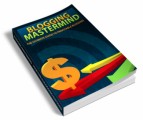Salespage Snapshot

Table of Contents
Foreword
Chapter 1:
Basic Principles of Body Language
Chapter 2:
How to Read Body Language
Chapter 3:
How to Speed-Read People’s Minds to Enhance Our Lives
Chapter 4:
The Role of Eyes in Body Language
Chapter 5:
The Role of Head and Face in Body Language
Chapter 6:
The Role of Neck, Chest and Back in Body Language
Chapter 7:
The Role of Hands and Arms in Body Language
Chapter 8:
The Role of Legs in Body Language
Chapter 9:
The Role of Lips in Body Language
Chapter 10:
Ways to Improve Body Language
Wrapping Up
Sample Content Preview
Chapter 1:
Basic Principles of Body Language
Before we start out with the amazing techniques, we are going to tell you about reading body language, it is most important to first understand what body language really means.
This initial chapter tells you what this concept is all about, and what specific principles are involved.
Knowing these principles, you will know what you should be looking for exactly when you are trying to speed-read what goes on in a person’s mind. So, here is a brief description of what body language means and what you should keep in mind when you are trying to interpret it.
Basic Principles of Body Language
In both formal and casual communication, a lot of emphasis is placed on words or what people say. However, nonverbal communication is equally or perhaps even more important. Body language says a lot, and many times, what it says has more impact than the words that are actually spoken aloud.
For instance, a person might say “I am happy to welcome you into my home.” But, if their arms are crossed over their chest, their body is in a rigid stance, and their face is unsmiling, then an opposite message to his words will come across. The person they speak to will see and feel this, and will react accordingly.
Recognizing the power of nonverbal or body language, psychologists have long been studying a field of science called kinesics. This delves into body language as a significant factor in communication, and in extension, in human relationships. For example, for managers and leaders, understanding body language is very important. Nonverbal gestures and cues help them evaluate their employees and assess the reactions or thoughts of people in the boardroom.
From the job interview process up to the time when an employee resigns his job or gets fired, his body language is observed and “listened to.” Outside the work environment, nonverbal language is equally important. Every member of a family, parents and children, lovers, spouses, neighbors, friends, enemies—communicate through nonverbal means. And although silent, nonverbal messages are often loud, clear and unmistakable.
The teenager who storms out and bangs a door, the lovers who exchange tender looks and the mother who worriedly waits for a daughter to come home—these people do not have to say even one word to communicate their exact feelings.
Therefore, the first basic principle of body language is this:-
Body signals reveal true feelings and thoughts.
Most people, under normal circumstances, are not consciously aware of their body language. As such, they do not often use body language to lie or cover up the truth.
This means that compared to words, body language tends to be a more accurate reflection of what they truly feel or think. In cases when what a person says is different from what his body language says, trust the nonverbal message more than the actual words.
How to read body language correctly is a skill that is developed through experience, practice, and careful observation. Being observant is especially important to learn how to correctly interpret nonverbal language.
One should know that it is not just the facial expressions, the body stance, or the movements of the limbs that comprise body language. Here are other elements of nonverbal communication:-
• The distance or space between the people communicating (also called proxemics)
• The breathing or respiration of the person, and other signs if present or noticeable: perspiration, blushing, pulse rate
• The quality of his voice (pitch, pace, volume, intonation, pauses and others)
• How a person holds or touches certain things such as a pen, cigarette, bag or his glasses
Being observant means noticing all these, in addition to the facial expressions, of course, and the movements of the body. Through studying body language, one can further learn intricate varieties and details to these general expressions that convey different meanings.
Chapter 2:
How to Read Body Language
Now that you know what body language means, it is good time for us to start with our initial techniques. There are various ways of reading body language—you should know how to look for the telltale signs—but at the same time, you should know that there will be exceptions.
In any case, these signs are almost universal and you can use your better judgment to find out how people tell what you want to know, most times without putting their thoughts into words.
Let us get started with the various tips and techniques on how you can read and interpret body language in the people that you meet.
How to Read Body Language
For people who are interested in learning how to read body language, certain skills are necessary. First, one must be observant. Second, they must be willing to put effort into the learning process. They should understand that they will need real experience as their hands-on training, and that they will not master the art overnight or after just a few days or weeks. It takes careful study and much patience.
That said learning to read body language is not a very difficult task. One reason for this is that it has been studied for a long time by psychologists and scientists.
They have laid down considerable groundwork to guide those who are truly interested in learning how to interpret nonverbal language. Another reason is that learning the skill is inherently fascinating and useful.
All people want to know when someone is lying to them, or what real thoughts lie beneath a poker face. The study of body language is also naturally engrossing for someone who is interested in people and the dynamics of relationships.
Here are some tips to read body language:-
1. Note the facial features, especially the eyes. These are the “windows to the soul” and they convey much of what a person feels inside. If the eyes are dilated or seem to be wide open, it means that the person is interested in the topic or in the person he is talking to. Dilated eyes also indicate focus or concentration. In other cases, they can mean that the person has been taking drugs.
2. Where the eyes are directed can also be significant. If they are looking at the side, the person may be feeling guilty or wanting to hide something. If the eyes are looking down, he may be feeling shameful or subservient. But these interpretations are not correct one hundred percent of the time. It will take experience to learn how to correctly gauge what the eyes are saying.
Here are a few facial gestures or movements and what they can mean:
1. Rubbing the chin – The person is thinking or trying to decide on something.
2. Eyebrows raised – These indicate shock or surprise. The greater the emotion, the higher the lift of the eyebrows.
3. Touching the eyebrows quickly – This can mean a sort of a greeting, a sign to acknowledge someone who has just entered the room or started talking to the person.
Also notice the general body position. If one person’s stance or position is similar to that of the person next to him, this can mean that they both are comfortable with one another, and that they are hitting it off. This is called “mimicking” or imitating the other person’s body position.
Observe as well the distance or space between two people. The closer they are, the more affection, warmth or openness there is between them. If they are far apart, they can be recent acquaintances who are not (yet) very interested in one another.
If one person moves closer to another, but this second person moves farther away, this means he is turning away or refusing any further closeness. But if the second person moves closer too, he is reciprocating the first person’s interest or advances.
The hands, fingers, arms, legs, feet and other body parts can express so many things that it will take a whole book to cover all the possible interpretations. Learn more by reading on the subject, and observe people around you to become more skilled in interpreting body language.
Other Details- 1 Ebook (PDF), 40 Pages
- 2 Graphics (PNG)
- 1 Salespage (HTML)
- Year Released/Circulated: 2018
- File Size: 3,039 KB
License Details:
[YES] Ebook Can be given away against an email address
[YES] Can sell the WHOLE product and keep 100% of the sales
[YES] Can sell the WHOLE product for Resale Rights
[YES] Can sell the WHOLE product with Master Resale Rights
[YES] Can edit the Squeeze & TY + MRR Upsell Pages
[YES] The WHOLE product can be packaged with other products you sell
[YES] The WHOLE product can be offered as a bonus with other products you sell
[YES] The WHOLE product can be added to paid membership sites
[YES] The WHOLE product can be offered through auction sites
[NO] WHOLE Product can be given away
[NO] WHOLE Product can be added to free membership sites
[NO] Ebook can be modified in any way
[NO] Can sell with Private Label Rights














